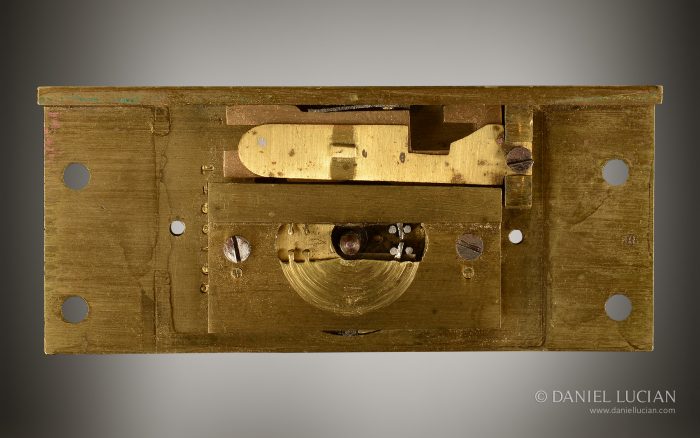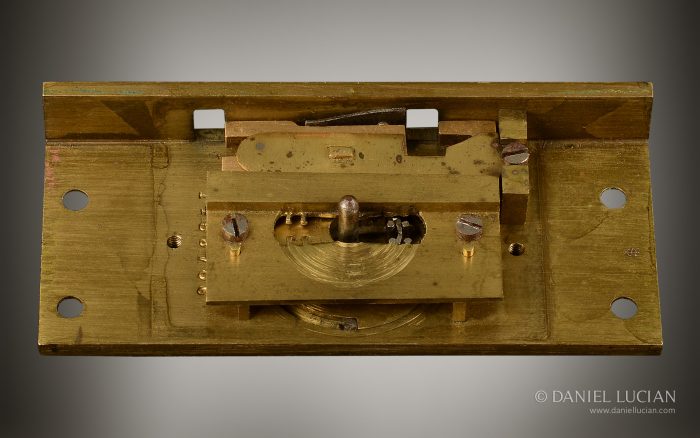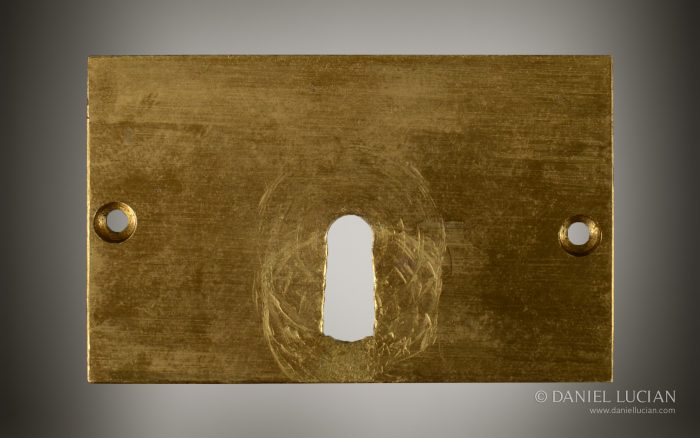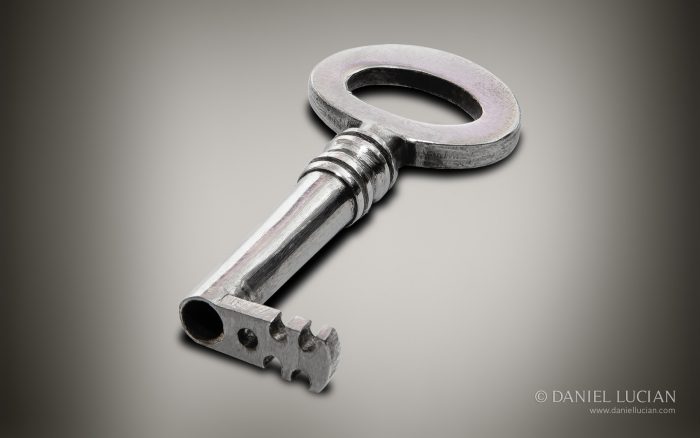George Davis Patent Lock
Based in Windsor, Berkshire, the lock maker, George Davis patented his ‘Double Chambered’ lock in 1799.
The design of this lock works in the following way:
- A double-sided bitted key passes through the front aperture as normal, and then rotates anti-clockwise by 90 degrees.
- The key then enters a secondary aperture leading to the lower chamber of the lock mechanism. It is within this lower chamber that the actual locking mechanism resides.
- The key makes contact with a rotating disc inset with pins and raised ridges, and can then be turned further anti-clockwise, deploying the sliding bolt at the 100-180 degree mark.
- The key then completes its turn all the way past the 0 degree mark and back to the 90 degree mark (where the key had initially entered the lower chamber).
- The key is withdrawn through the secondary aperture, back into the upper chamber, and rotates clockwise by 90 degrees to be removed completely from the lock.
The purpose of this ‘Double Chambered’ lock is to conceal the actual wards and mechanism within the lower chamber by using a very simplified frontage and upper lock chamber that give away no clues as to what is contained within.
Being almost exclusively used for government dispatch boxes, protection for the sensitive documentation stored within required a further step in security. By request, George Davis engraved some inner lock plates with messages to any locksmith who might be employed to make a replacement key. These messages offered a reward to the locksmith (anywhere from between £5 – £50) to report anyone requesting such a key to be made.

Antique George Davis Patent lock.

Antique George Davis Patent lock.

Concealing front plate from an antique George Davis Patent lock.

Key for an antique George Davis Patent lock.
 Price On Application
Price On Application